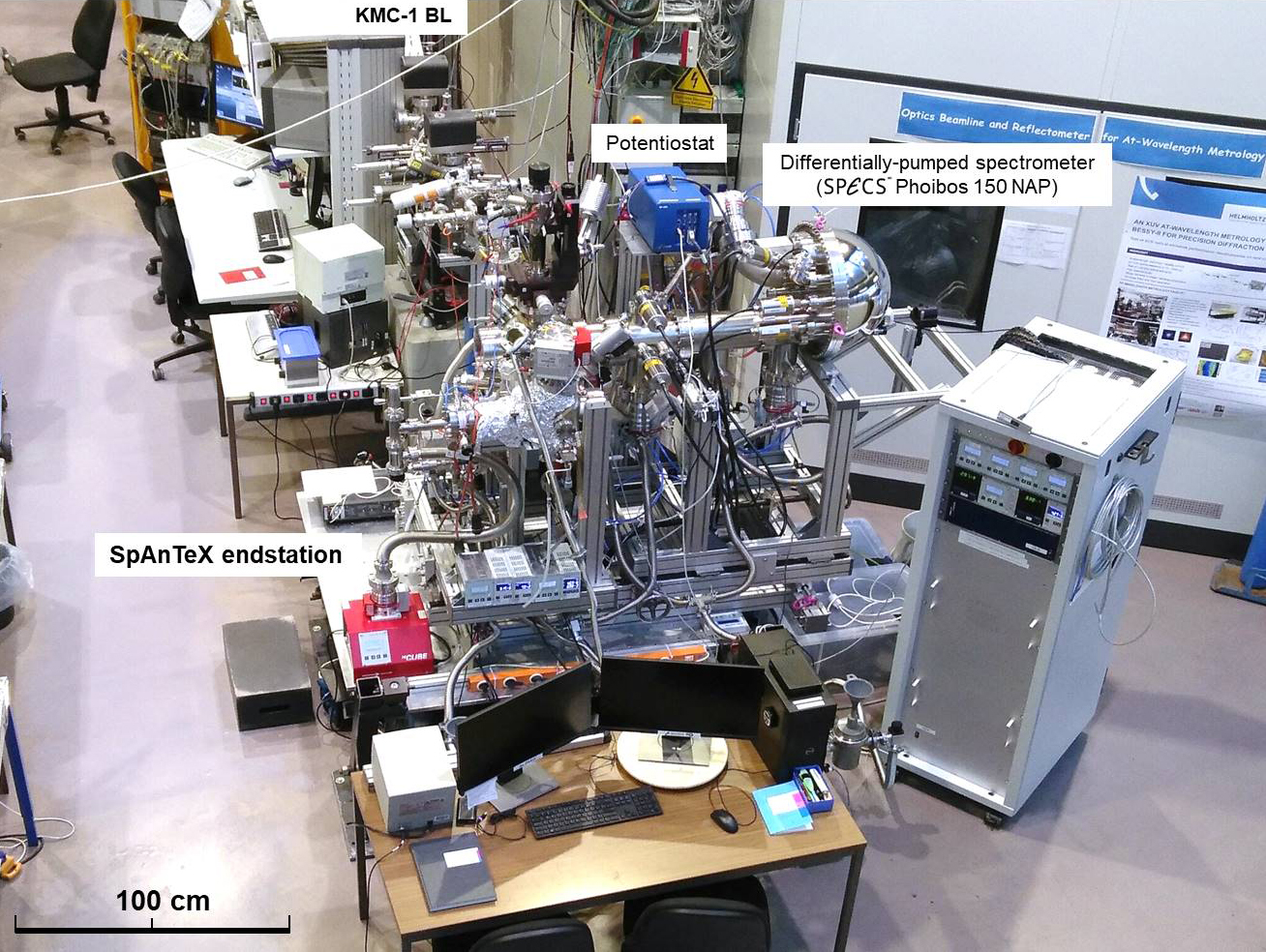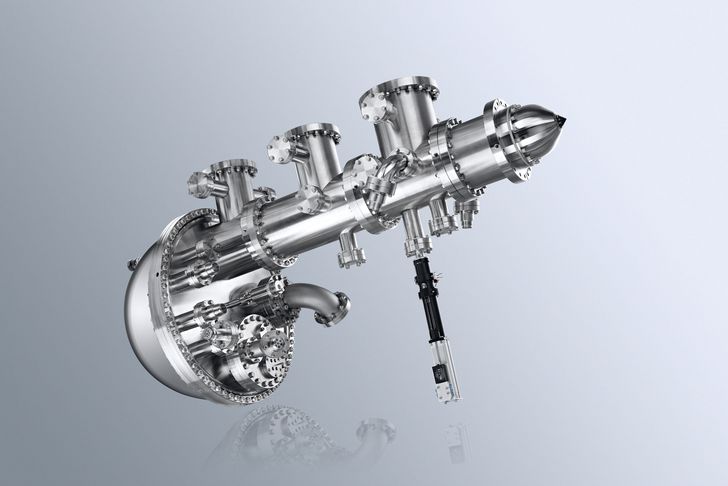The first results from the SpAnTeX (Spectroscopic Analysis with Tender X-Rays) endstation installed on the KMC-1 beamline at the BESSY II synchrotron in Berlin have been published in a special issue of the Journal of Physics D: Applied Physics. This special issue, which is dedicated to In Situ/Operando Investigation of Catalytic and Electrocatalytic Interfaces, has been organized by Marco Favaro from the Helmholtz-Zentrum Berlin (HZB), Germany, Luca Artiglia from the Paul Scherrer Institut (PSI), Switzerland and Bongjin Simon Mun from the Gwangju Institute of Science and Technology (GIST), South Korea as guest editors. SpAnTeX endstation has been recently opened for user operation and is designed for cutting-edge NAP-HAXPES investigations of liquid/solid, liquid/vapor interfaces as well as bulk liquids in the energy range between 2 and 10 keV.
The article from Marco Favaro et al. "In situ investigation of the bismuth vanadate/potassium phosphate interface reveals morphological and composition dependent light-induced surface reactions" presents the investigations of the properties of BiVO4/aqueous KPi interface by combining different analysis methods (NAP-HAXPES, UHV-XPS, XAS and SEM). Since BiVO4 is a well-known material used in photoelectrochemical oxygen evolution reactions (OER), gaining insights into the elementary processes at the electrode-electrolyte interface is of crucial importance. The “Dip and pull” method is employed for in situ NAP-HAXPES measurements, that allows for direct investigations of the electrode-electrolyte interface during the electrochemical process. Two different types of BiVO4 samples with different surface morphologies and chemical stoichiometries were studied. The measurements were carried out at SpAnTeX endstation and at beamline 9.3.1 of the Advanced Light Source (Lawrence Berkeley National Laboratory, USA).
The paper from Juan-Jesús Velasco-Vélez et al. "A comparative study of electrochemical cells for in situ x-ray spectroscopies in the soft and tender x-ray range" contains a comparative study of four different types of electrochemical cells for in-situ spectroscopic investigations of the processes that take place at the electrode/electrolyte interface. The rapid progress of the NAP-XPS and NAP-HAXPES analysis techniques during the last decade has led the way for the development of various types of electrochemical cells. Thus, the number of newly developed EC-cells has increased tremendously during the last years. The article describes the current state-of-the-art of in situ electrochemical cells. In this study, the SiNx window cell, the holey SiNx cell, the ion exchange membrane (IEM) cell as well as the “Dip and Pull” method are evaluated in detail from the point of view of compatibility with different sample materials and analysis methods. Advantages as well as disadvantages of each EC-cell type are emphasized and summarized for different types of experiments. Furthermore, challenges for sample preparation and operation are discussed for different EC-cells.
PHOIBOS 150 NAP
In the field of ambient pressure XPS the PHOIBOS 150 NAP sets the benchmark for electron energy analyzers. In more than 50 systems worldwide it enables researchers to perform experiments at controlled ambient conditions. The PHOIBOS 150 NAP features a special wide angle pre-lens for highest transmission and efficient differential pumping. Exchangeable frontends allow perfect adaption to experimental requirements, working pressure, and transmission. The PHOIBOS 150 NAP can be equipped with 1D- and 2D-detectors.


